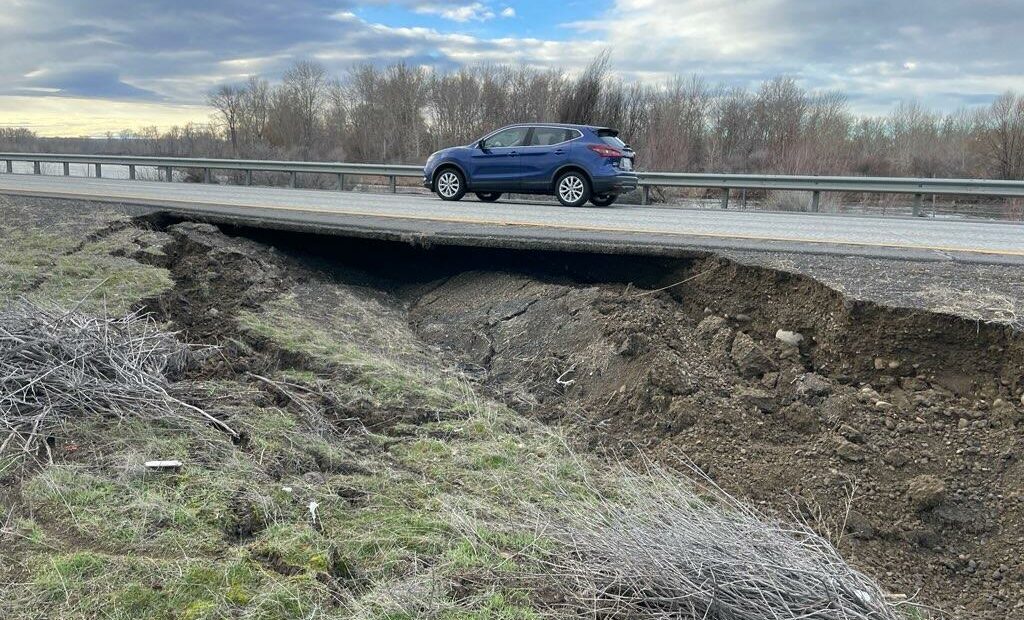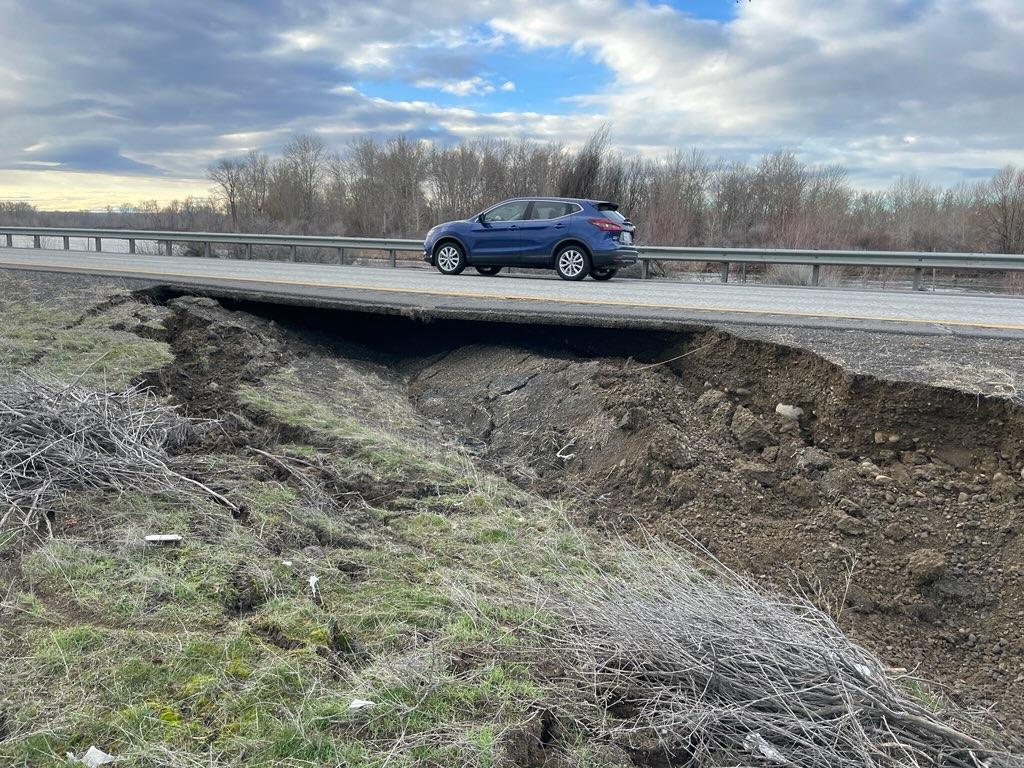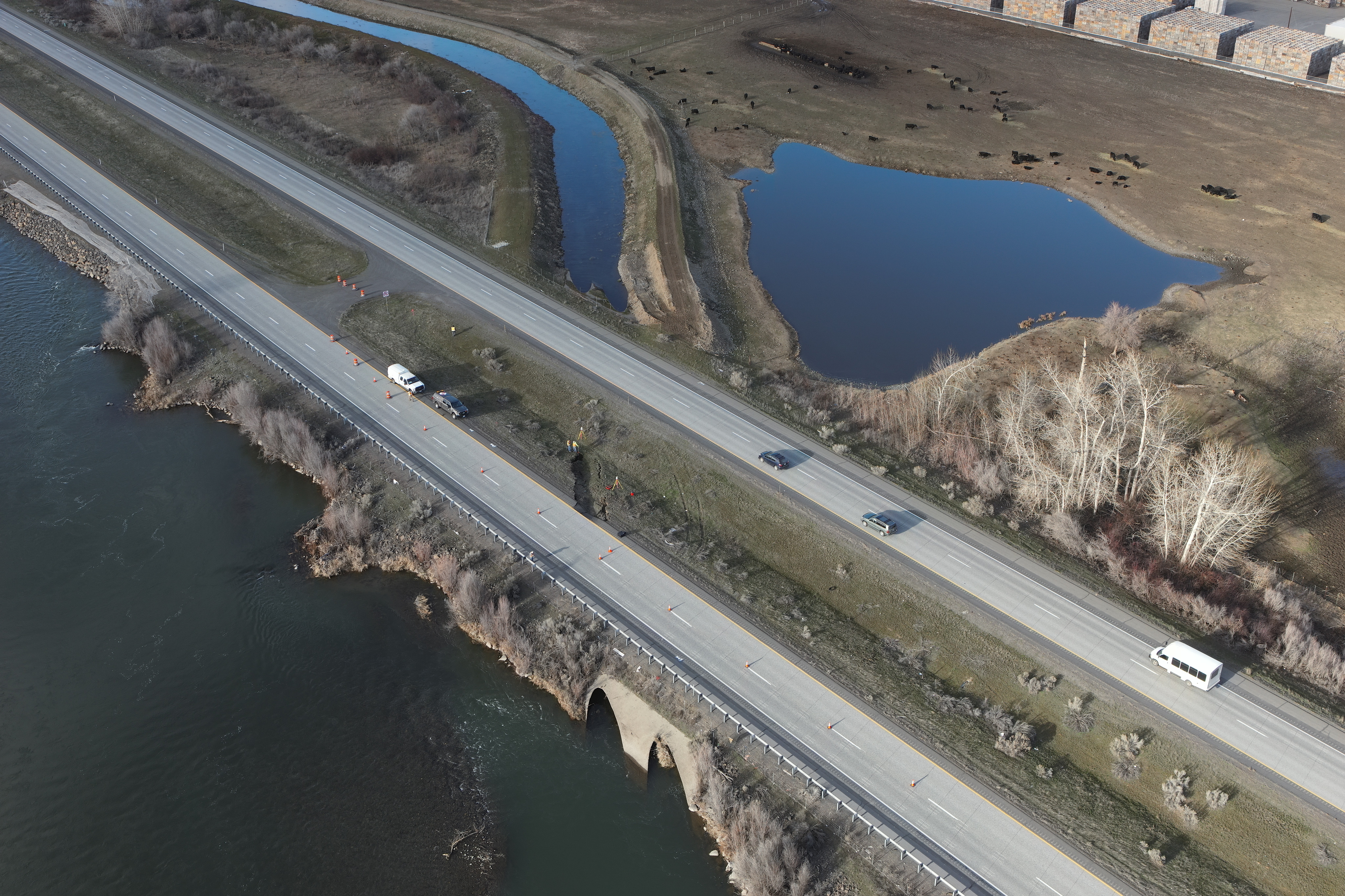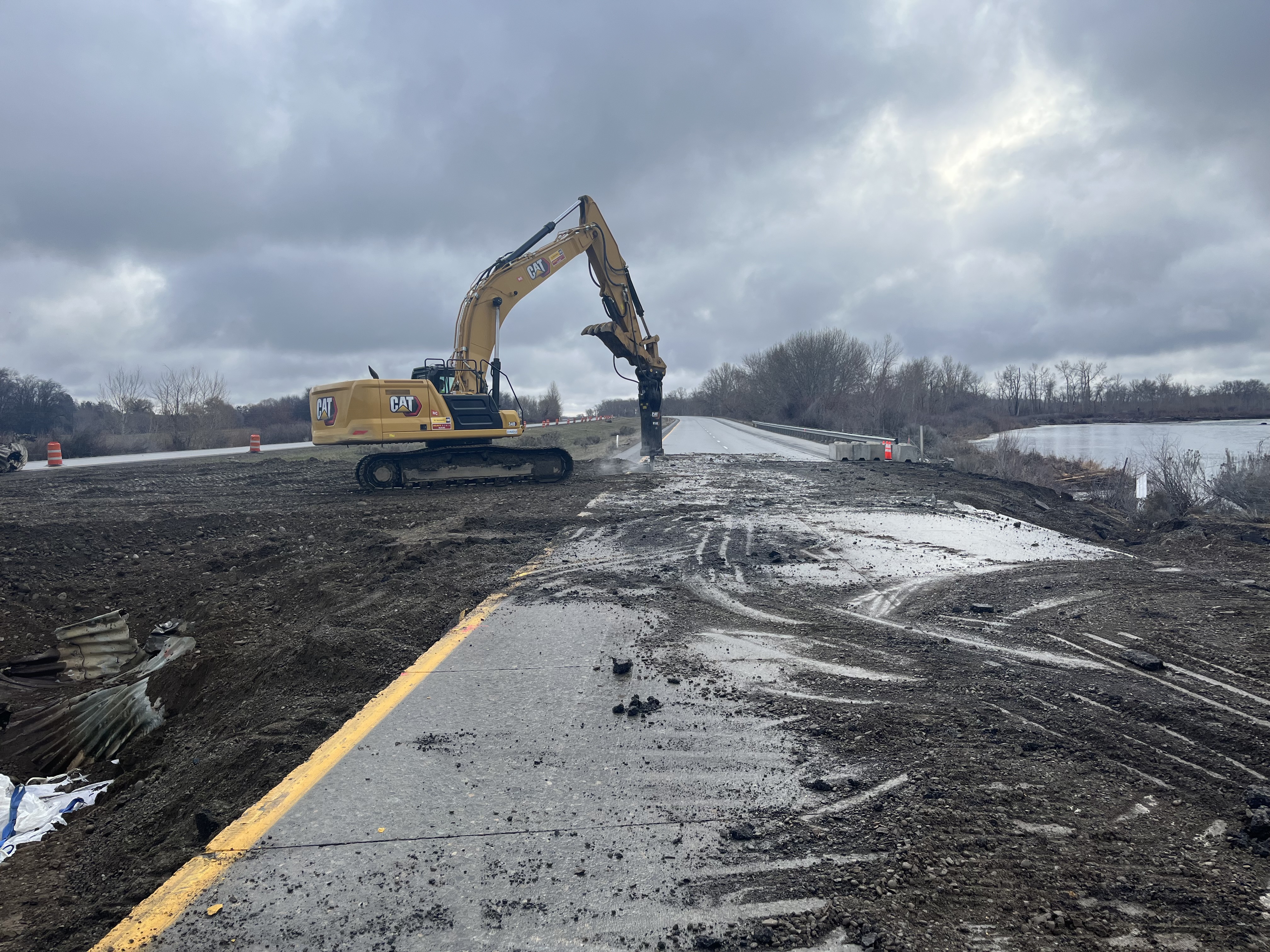
I-82 closed for more than a week, once it opens a bigger fix looms ahead
Listen
Read
(Runtime 1:02)
The major failing irrigation culverts that run under Interstate-82 between Yakima and the Tri-Cities have caused havoc for east-west truckers and travelers.
However, experts say this failing spot that closed down the interstate and created a major detour is just one place where water systems and major roadways meet across the Northwest.
“Some of it is failing, some of it is not,” said Randy Giles, an engineering manager for the Washington State Department of Transportation. “Some of it we inspect, we look at it, we prioritize what needs to be fixed but we built a lot of infrastructure. Now, we have to maintain a lot of infrastructure. We’re probably not spending as much money as we should be on the preservation and maintenance of our infrastructure.”
The closure on I-82 is slated to be temporarily fixed later this week – maybe, WSDOT said, by March 1. A more permanent fix could be more than three to five months away.
WSDOT said during the month of February, the average daily traffic on I-82 near Wapato is about 26,000 vehicles for both westbound and eastbound directions. Of that, about 14% are semi trucks, said WSDOT.

A close up photo of the embankment failure under the eastbound lanes of I-82 near Wapato.
(Credit: WSDOT)
What’s wrong?
Interstate-82 shut down partially starting Feb. 12. Then all lanes east and west were closed Feb. 16
The problem is a busted culvert that is about 300 feet long and 8 feet tall. There are two of them lying side by side like twins under the interstate. The structures were built more than 50 years ago. Now, it’s a corroded mess, Giles said. The culvert is supposed to drain excess water from the Roza Irrigation District and deposit it back in the Yakima River but the course has changed. Now, the culvert spends a lot of time submerged from backed up river water, Giles said. It was made of galvanized steel.
“It’s not corrosion proof,” he said. “It was 45 years in the ground next to the river and it had a lot of corrosion. We’re going to see a lot of those types of issues with our current infrastructure. We try to build our roadways to last 80 to 100 years but, yeah, stuff wears out and we’re probably not keeping up with replacement.”
Still, it’s unclear who is ultimately responsible for this culvert. It could be The U.S. Bureau of Reclamation, WSDOT or the Roza Irrigation District – but so far none of the agencies have definitely claimed the culvert.
Headache or windfall?
The detour around this spot on I-82 leads people onto U.S. Highway 97. It winds past the Yakama Nation Reservation where the detour, flaggers and cones are causing a lot of traffic headaches for local drivers. However, some businesses are profiting.
At the tribal gas station called Yakamart, a cashier, Celix Bailey, said the stop is seeing an increase in business from long haul truckers who are stopping for gas and snacks.
Tribal government leaders also said they were expecting to see a bump in Legends Casino sales from the increase in traffic past their operation in Toppenish.

An aerial view of where the embankment failed under eastbound I-82 near Wapato. This was taken hours after it was discovered with the eastbound lanes closed.
(Credit: WSDOT)
Irrigation season
The Roza Irrigation District season is supposed to start up on March 18 meaning this broken culvert project needs to be fixed soon. This wasteway and culvert structure is one of the release valves for a major part of the Roza system.
“WSDOT has told us that the repair work (design, permitting, materials acquisition and construction) will likely take a few months which will put it well into the irrigation season,” said Scott Ravell, manager of the Roza Irrigation District, in an email. “Wasteways are used to balance out the flows in the canal so that the canal does not overtop. Canals telescope down as you go downstream.”
Ravell said that wasteways convey operational spills – like conveyance water and ordered water that isn’t taken by the farmer for example, if it rains after they ordered water – back to the river.
But the irrigation system has three small reservoirs that can catch some of the water before it reaches the wasteway. That could aid contractors as they work to repair the wasteway during irrigation season. The only problem would be if there is a major storm or canal break.
Perhaps more pressing for farmers though, Ravell said, is the lack of snowpack and stored mountain water for irrigation season this year.
















